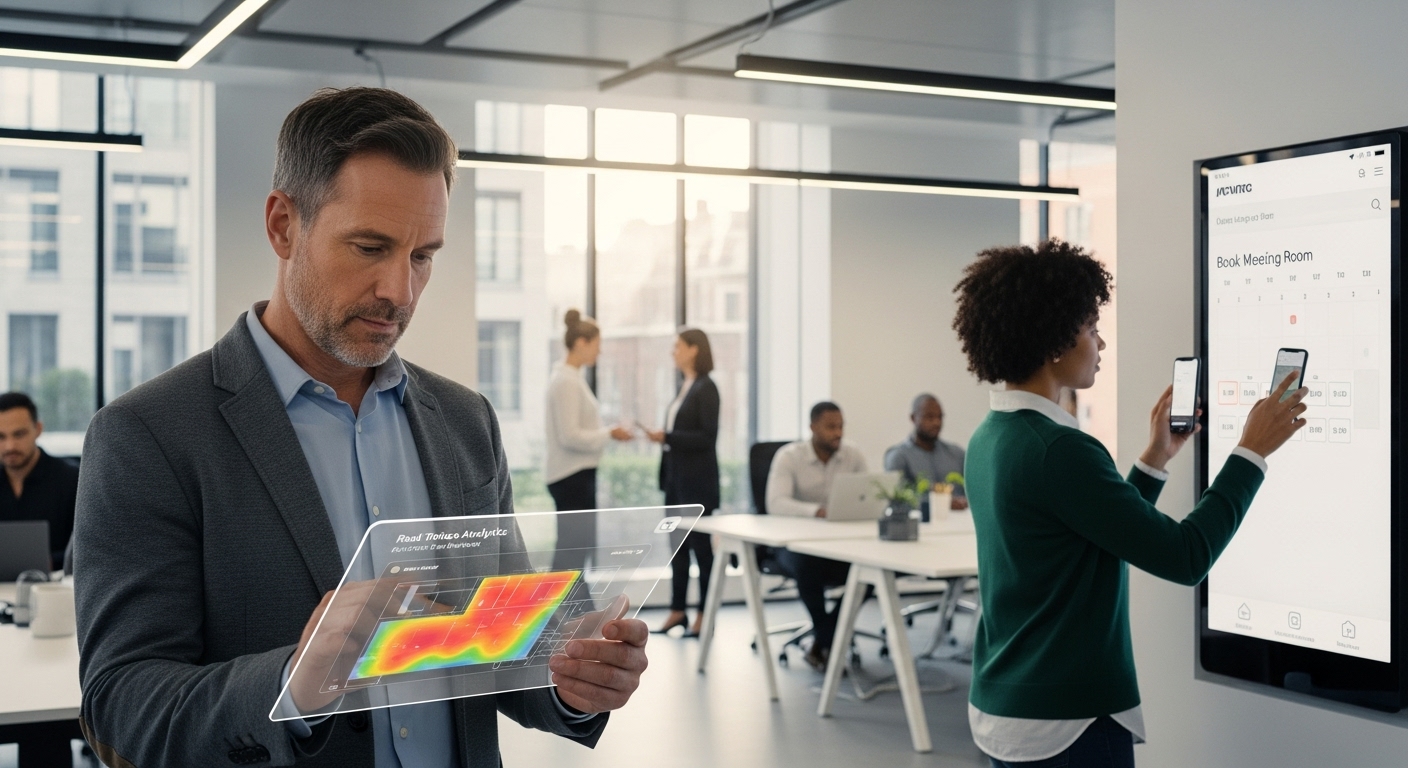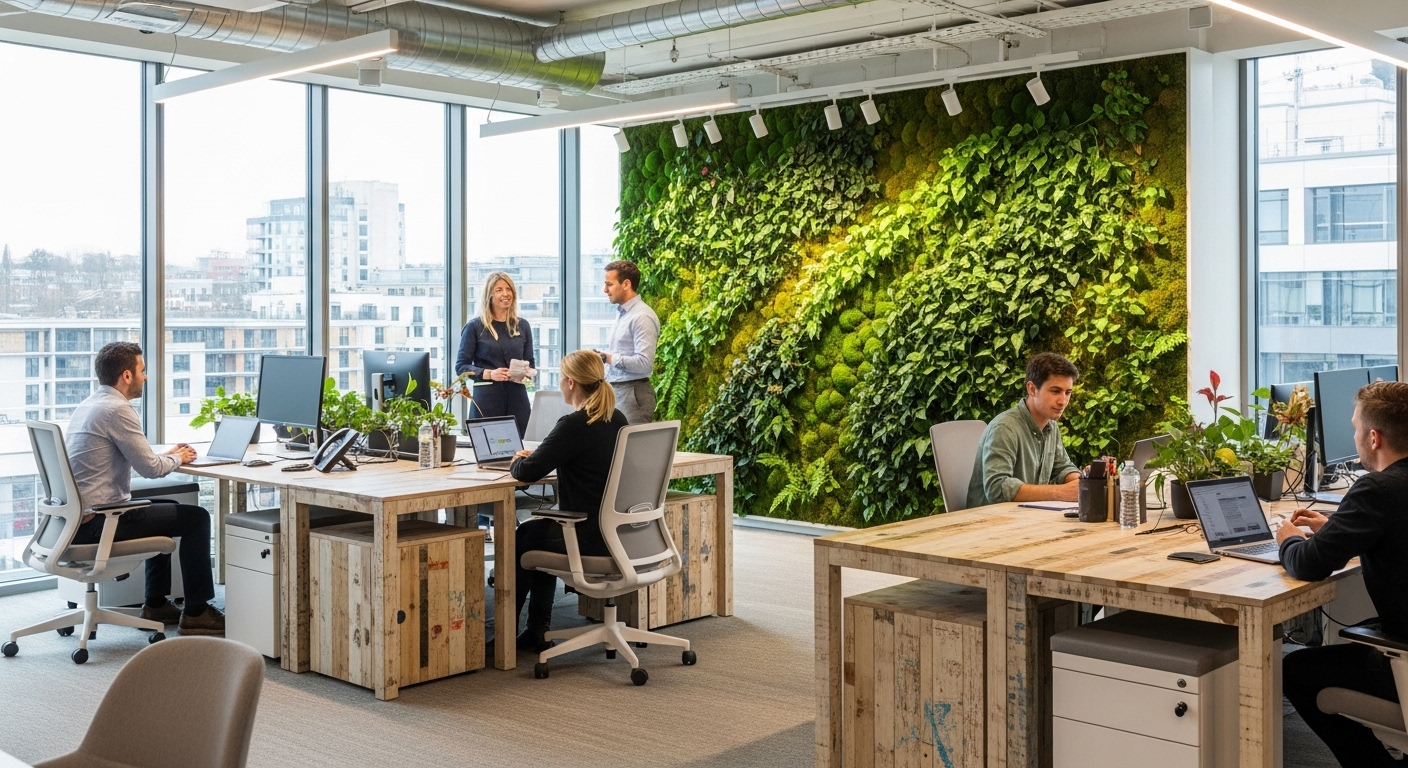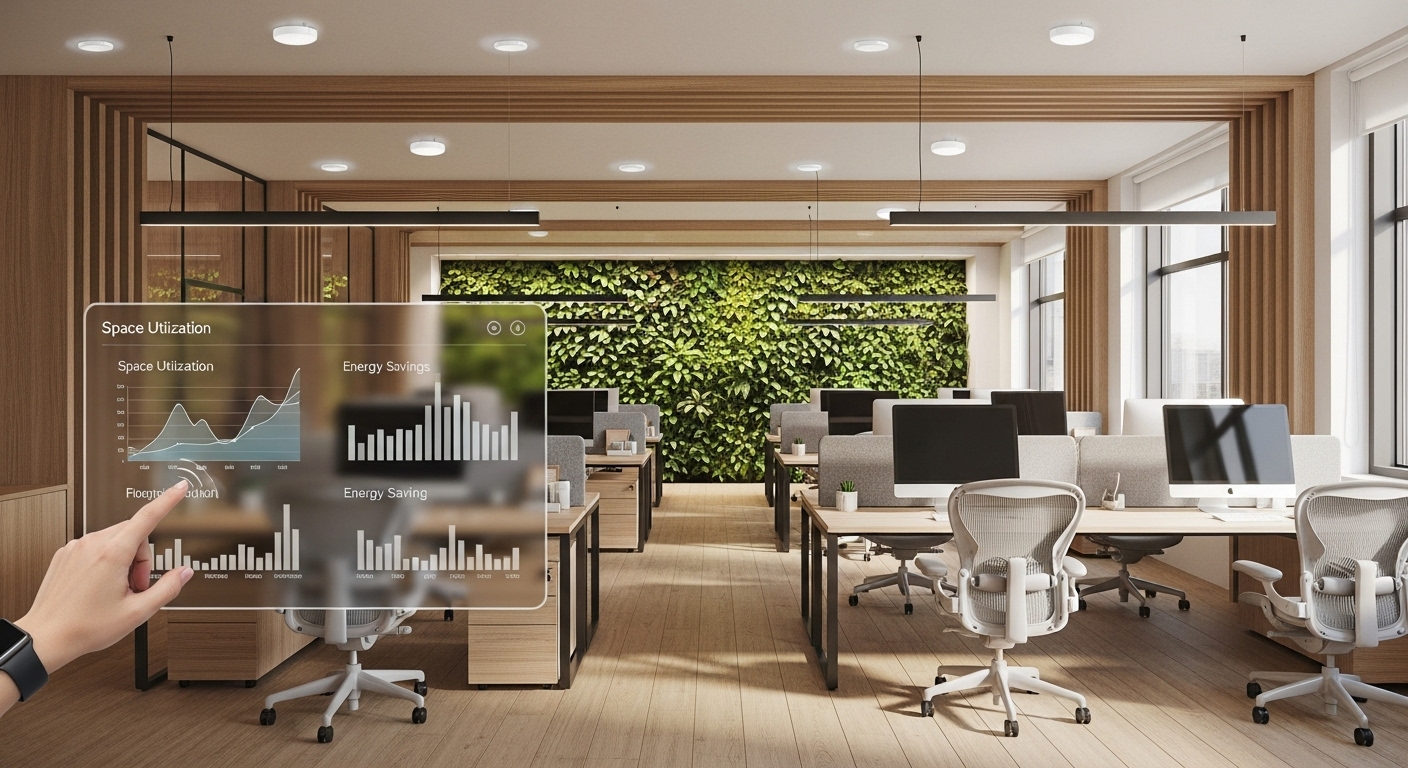In the evolving landscape of the future of work, the term ‘smart office’ has moved from a futuristic buzzword to a strategic imperative. Businesses are no longer just asking what smart office technology is, but what tangible returns it can deliver. This isn’t about installing a few flashy gadgets; it’s about creating an intelligent, responsive ecosystem that enhances productivity, streamlines operations, and fosters a superior employee experience. The real challenge for leaders today is to look beyond the initial investment and quantify the return on investment (ROI) in a holistic way. This involves measuring not only direct cost savings from energy efficiency but also the profound, albeit less tangible, benefits like improved talent retention and data-driven spatial planning. This guide will provide a data-driven framework for understanding and calculating the comprehensive ROI of smart office implementation, breaking down how to connect technological upgrades to measurable gains in efficiency, employee well-being, and long-term business resilience.
Defining the modern smart office ecosystem
Before calculating its value, it’s crucial to define what a modern smart office ecosystem truly entails. It’s far more than automated lights or a digital reception. A true smart office is an interconnected network of hardware and software that collects and analyzes data to optimize the workplace environment in real time. This ecosystem is built on a foundation of the Internet of Things (IoT), where everyday objects are embedded with sensors and connectivity. Key components include smart environmental controls for lighting and HVAC, which adjust based on occupancy and natural light to conserve energy. Another critical element is intelligent space management, powered by sensors that monitor desk and room usage. This data fuels dynamic booking systems, allowing employees to find and reserve spaces effortlessly while providing facilities managers with powerful insights into how the office is actually used. Furthermore, seamless access control systems using smartphones or biometric data eliminate physical keycards, enhancing both security and convenience. Finally, integrated communication and collaboration platforms tie everything together, connecting employees to each other and their environment. When these technologies work in concert, they create a frictionless workplace that anticipates needs and removes operational hurdles, allowing employees to focus on high-value work.
Calculating the tangible ROI: hard savings and efficiency gains
The most direct way to measure smart office ROI is through tangible cost reductions and efficiency improvements. Energy consumption is a primary target. Smart HVAC and lighting systems, which power down empty rooms and adjust to ambient conditions, can reduce a building’s energy costs by as much as 30-50%. For a large corporate office, this translates into significant annual savings. The second major area is real estate optimization. Occupancy sensors provide precise data on which desks, rooms, and entire floors are being used and when. This allows businesses to consolidate their footprint, sublease underutilized space, or reconfigure layouts to support actual work patterns instead of relying on outdated assumptions. In high-rent urban centers, reducing real estate needs by even 10-15% can generate millions in savings over the life of a lease. Another tangible benefit comes from automating routine administrative and facilities management tasks. Automated visitor management systems, smart parking solutions, and predictive maintenance alerts for equipment reduce the manual labor required to run the office, freeing up staff to focus on more strategic initiatives. By quantifying these savings—energy, real estate, and labor—organizations can build a powerful business case for their smart office investment from day one.
The intangible ROI: enhancing employee experience and well-being
While hard savings are compelling, the intangible returns related to employee experience often deliver the greatest long-term value. A frictionless work environment directly impacts employee satisfaction and productivity. When staff can easily find a suitable workspace, book a meeting room without conflict, and personalize their environmental settings like temperature and lighting, daily frustrations are eliminated. This reduction in ‘workplace friction’ minimizes cognitive load and allows employees to enter a state of deep work more easily. This improved experience is a powerful tool for talent acquisition and retention. In a competitive job market, a technologically advanced, responsive, and comfortable workplace can be a key differentiator that attracts top performers. High employee retention, in turn, saves the company significant money associated with recruitment, hiring, and training. According to some studies, the cost of replacing an employee can be as high as two times their annual salary. By investing in an environment that supports well-being and removes barriers to productivity, companies are investing in their most valuable asset: their people. While harder to quantify on a spreadsheet, the impact on morale, engagement, and employer brand is undeniable and directly contributes to the bottom line through sustained high performance.
Smart tech as a sustainability driver: the green bottom line
In today’s business climate, sustainability is no longer a peripheral concern but a core component of corporate strategy and brand identity. Smart office technology is a powerful enabler of environmental, social, and governance (ESG) goals. The most evident contribution is in energy optimization. By using real-time data to control lighting, heating, and cooling, smart buildings drastically reduce their carbon footprint. This not only aligns with corporate responsibility mandates but can also lead to tax incentives and lower utility bills. Beyond energy, smart systems contribute to waste reduction. For example, data on cafeteria usage can help optimize food ordering, minimizing spoilage. Smart water management systems can detect leaks and monitor consumption, conserving a vital resource. This commitment to sustainability has a direct impact on brand perception. A company that visibly invests in green technology is more attractive to environmentally conscious clients, partners, and, crucially, employees. A strong ESG profile can improve access to capital from socially responsible investors and differentiate the company in a crowded market. Therefore, the ‘green bottom line’ driven by smart office tech delivers a dual benefit: it achieves measurable resource efficiencies while simultaneously enhancing the brand’s reputation and appeal to key stakeholders.
Leveraging workplace analytics for strategic decision-making
Perhaps the most transformative aspect of a smart office is its ability to generate a continuous stream of actionable data. Every interaction within the space—a booked room, an occupied desk, a temperature adjustment—becomes a data point. This wealth of information, known as workplace analytics, empowers leaders to move from reactive management to proactive, data-informed strategic planning. For example, by analyzing long-term space utilization patterns, organizations can make confident decisions about future real estate needs. They can see which types of collaboration spaces are most popular, which quiet zones are underutilized, and how hybrid work policies are impacting office attendance on different days of the week. This intelligence is invaluable for designing future office layouts that precisely match employee needs, avoiding costly and ineffective guesswork. Furthermore, environmental data on air quality, temperature, and noise levels can be correlated with employee feedback to create healthier and more productive work environments. By understanding how the physical space influences behavior and performance, businesses can continuously refine their workplace strategy, ensuring their real estate portfolio is not just a cost center but a strategic asset that actively supports business objectives and adapts to future changes in work.
Navigating the challenges: security, privacy, and implementation hurdles
Despite the compelling ROI, implementing a smart office ecosystem is not without its challenges. The primary concern is cybersecurity. With hundreds or thousands of IoT devices connected to the network, the potential attack surface for malicious actors expands significantly. A breach could compromise sensitive data or even disrupt physical building operations. Therefore, a security-first approach is non-negotiable, requiring robust network segmentation, regular device patching, and secure access protocols from the outset. Closely related is the issue of employee privacy. While collecting data is key to optimization, it must be done transparently and ethically. Employees may feel a sense of being constantly monitored, leading to a ‘big brother’ effect that erodes trust. It is critical to anonymize personal data, clearly communicate what information is being collected and why, and establish firm governance policies. Finally, the upfront cost and complexity of implementation can be a significant hurdle. A successful rollout requires careful planning, a phased approach that starts with high-impact pilot projects, and a dedicated change management strategy to ensure employee buy-in and adoption. Overlooking these challenges can undermine the entire initiative, turning a promising investment into a source of risk and frustration.
Ultimately, the return on investment for smart office technology is a powerful combination of measurable efficiencies and profound cultural enhancements. The journey begins with quantifiable savings in energy and real estate, which provide a solid financial foundation for the investment. However, the true, lasting value is realized in the human-centric benefits: a seamless employee experience that reduces friction, boosts well-being, and serves as a magnet for top talent. By creating an environment where people feel supported and empowered, businesses foster a culture of productivity and innovation. Moreover, the data generated by these intelligent ecosystems transforms the workplace from a static container into a dynamic strategic asset, providing the insights needed to make smarter, faster decisions about space, resources, and future work models. While the path to implementation requires careful navigation of security, privacy, and change management, the outcome is clear. A well-executed smart office is not an expense but a strategic investment in a more efficient, sustainable, and human-centered future of work, delivering returns that resonate far beyond the balance sheet.





